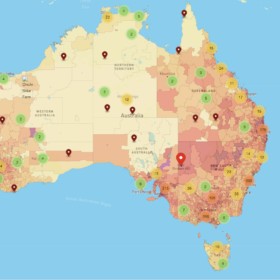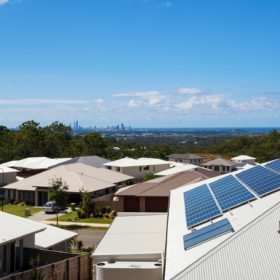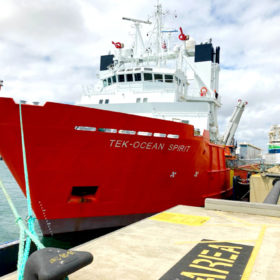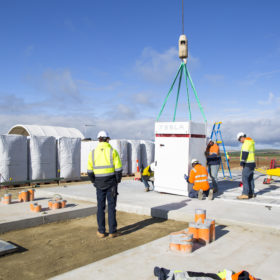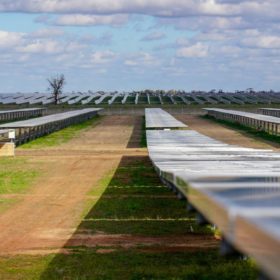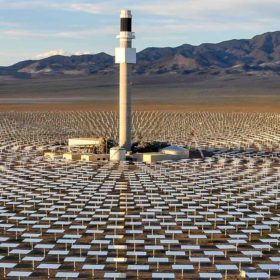Lithium-ion home battery blaze in Adelaide reignites safety concerns
A fire caused by a lithium-ion home battery system in northern Adelaide over the weekend has led authorities to urge solar and battery owners to be vigilant with maintaining their systems.
Australia passes 25GW of installed pv capacity, leading world with almost 1kW per person
Australia has hit a historic milestone, reaching 25GW of installed solar. As the Australian PV Institute noted on Monday, that’s more solar per capita than anywhere else in the world.
Water-based electrolyser for green hydrogen production
U.S. company Verdagy has secured a US$25 million (AU$35 million) investment for its new electrolyser technology, which provides hydrogen fuel for heavy industrial applications. The membrane-based technology uses large active area cells, high current densities, and broad operating ranges to deliver hydrogen at scale.
New dehydrogenation process to improve hydrogen storage
The U.S. Department of Energy’s Ames Laboratory launched a new catalyst based on nitrogen and carbon to extract hydrogen from hydrogen storage materials at mild temperatures and under normal atmospheric conditions. Furthermore, South African President Cyril Ramaphosa said that the country is working on attracting new investments in electric vehicles and hydrogen and Norwegian consultancy and classification society DNV launched, together with 18 industry partners, a new Joint Industry Project (JIP) to enhance the standardisation for hydrogen production systems that use renewable energy-powered electrolysis to produce green hydrogen.
WA rolls out new rules to manage booming rooftop solar sector
Western Australia will today introduce new curtailment rules which will allow for all new and upgraded solar PV and battery energy storage installations with an inverter capacity of 5 kW or less to be remotely turned down or switched off in emergency situations.
Major marine survey launched for proposed $3.5 billion transmission project
The proposed 1.5 GW Marinus Link transmission project, which would link Tasmania and the Australian mainland via an undersea electricity interconnector, has reached another milestone with the launch of a new engineering survey which aims to identify the most suitable corridor for the cables.
Seasonal frequency in the NEM: is VRE continuing to drive it?
On 16 March 2021, the Australian Energy Market Commission (AEMC) published a draft determination rule which confirms the mandatory primary frequency response (PFR) arrangements to remain unchanged beyond the sunset date of 4 June 2023 established in March 2020. The primary frequency control band implemented under mandatory PFR is 49.985Hz -50.015Hz.
Renewables reach new highs in NEM as fossil fuels slump to historic lows
Renewable energy production reached record highs in Australia in 2021 with new data from the Climate Council revealing clean technologies including rooftop solar and utility scale PV supplied five times more power into the nation’s largest electricity grid than gas.
Next-gen concentrated solar power now under development in US
In new studies led by researchers from the National Renewable Energy Laboratory, the US Department of Energy pursues an energy cost goal of US$0.05 per kilowatt-hour.
Weekend read: Expansions in n-type
The past 12 months have been a turbulent time for PV manufacturing. Rapid and impressive developments in technology have been accompanied by price increases up and down the supply chain, and energy shortages weighed on production in the second half of the year. Chinese n-type module manufacturer Jolywood is now pressing ahead with ambitious expansion plans despite the disruption. pv magazine publisher Eckhart K. Gouras and editor Mark Hutchins recently caught up with Cathy Huang, European sales director at Jolywood, to discuss the company’s plans to bring n-type TOPCon technology into mainstream production.

